Are you wondering if that vintage jersey you’re eyeing is the real deal? This guide helps you authenticate classic football shirts, avoid counterfeits, and ensures you’re investing in a genuine piece of memorabilia. CAUHOI2025.UK.COM provides resources to help you identify authentic shirts. This guide includes product codes, labels, and other key features to look for. Learn about vintage apparel, football collectibles, and jersey authentication.
1. How to Tell If Classic Football Shirts are Legit: An Overview
Determining the authenticity of classic football shirts requires a keen eye and some research. While modern shirts often have product codes, vintage jerseys demand a more detailed inspection. This guide provides key steps to verify the legitimacy of your coveted football shirt.
1.1. The Rise of Fake Football Shirts
The rising popularity of retro football shirts has unfortunately led to a surge in counterfeit items. Marketplaces like eBay, Etsy, and even independent websites are flooded with fakes, making it crucial to know how to distinguish between an authentic shirt and a replica.
1.2. Quick Checks for Modern Football Shirts (2000s Onward)
The easiest way to verify a football shirt from the early 2000s onward is by locating its unique product code. Here’s how:
- Identify the Manufacturer: Determine which manufacturer produced the shirt and if they used product codes during that season.
- Locate the Wash Label: Find the wash label inside the shirt.
- Find the Product Code: Look for the unique product code among the various numbers on the label.
- Google It: Search the product code on Google to see if the results match the shirt you have.
1.3. Authenticating Vintage Football Shirts (1970s-1990s)
Authenticating vintage football shirts is more challenging because they typically lack product codes. It requires a case-by-case research approach, comparing the shirt against trusted sources. However, several features can help you determine authenticity.
2. Essential Checks for All Football Shirts
Regardless of age, several features can indicate whether a football shirt is real or fake.
2.1. Inspecting Inside Labels
The presence of inside wash labels is a good start. Absence of these labels can suggest a fake, but there are exceptions:
- Player Issue Shirts: Some player issue shirts have the size guide printed directly on the inside instead of using wash labels.
- Vintage Shirts: Shirts from the 1970s, 80s, and 90s may not have inside wash labels.
- Removed Labels: Previous owners might have removed the labels for comfort, in which case you might see signs of removal.
2.2. Checking for Pen Marks on Wash Labels
Pen marks or writing on the wash label are a strong indicator of a fake shirt. These marks often appear on counterfeit items after they’ve been identified as such.
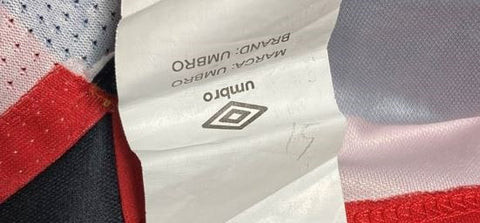 Pen mark on wash label
Pen mark on wash label
2.3. Identifying Product Codes on Wash Labels
From the early 2000s onward, manufacturers began adding product codes, also known as Manufacturer Part Numbers (MPNs), to clearly identify authentic shirts.
3. Manufacturer-Specific Details: Finding Product Codes
Not all manufacturers introduced product codes at the same time, and the location of wash labels varies. Here’s a breakdown by brand:
3.1. Nike
Nike introduced product codes around the early 2000s. The code is usually on a smaller label underneath the wash label, located near the bottom of the shirt. Look for the middle number of three or the bottom number of two.
 Nike label codes to authenticate genuine classic football shirts
Nike label codes to authenticate genuine classic football shirts
The product code may or may not have a dash (-) depending on the season.
3.2. Adidas
Adidas also introduced product codes around the early 2000s. The product code format looks like this:
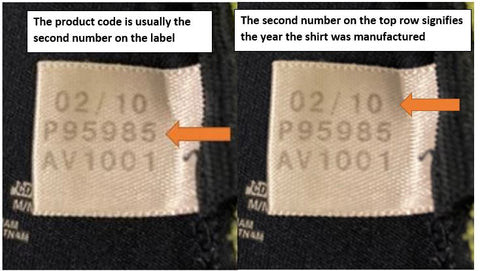 Adidas label code examples
Adidas label code examples
The second number on the top line indicates the season. In the example above, the shirt is from the 2010 season. Adidas product codes can be found either inside the collar or near the bottom of the shirt.
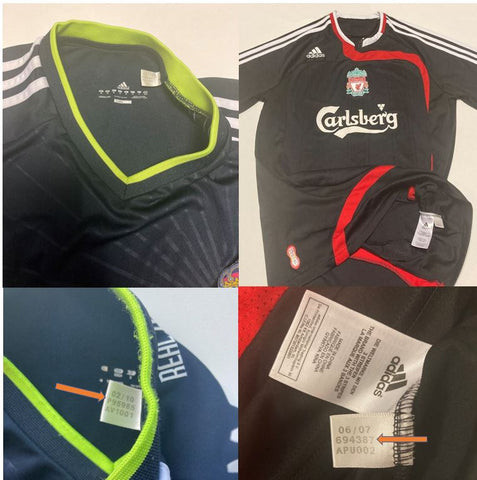 Adidas label codes for two shirts
Adidas label codes for two shirts
3.3. New Balance
The product code label is located under the wash label. Look for the “Style” code.
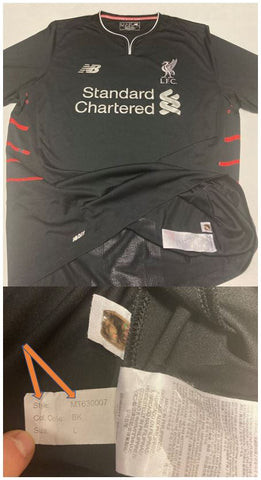 New balance label codes for football shirts
New balance label codes for football shirts
3.4. Under Armour
Similar to New Balance, the Under Armour product code label is under the wash label. The “Style” number is usually the one you’re looking for.
 Under Armour product codes
Under Armour product codes
3.5. Puma
For Puma shirts, look for the label with “STYLE NO” as shown below:
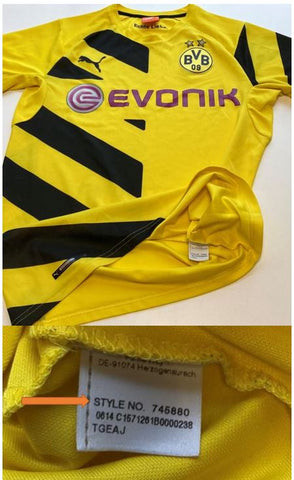 Product codes for Puma football shirts
Product codes for Puma football shirts
Some older Puma shirts may not have a Style No., so cross-reference with other trusted sources.
3.6. Warrior Sports
For Warrior Sports, the “Style” number is generally the product code.
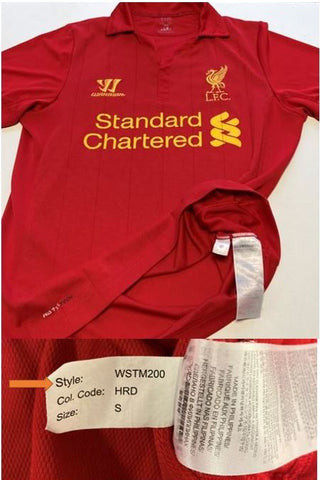 Warrior sports football shirt product codes
Warrior sports football shirt product codes
3.7. Umbro
Umbro shirts often lack unique product codes. While numbers may appear on inside labels, they aren’t necessarily unique identifiers for verification.
 Umbro football shirt products
Umbro football shirt products
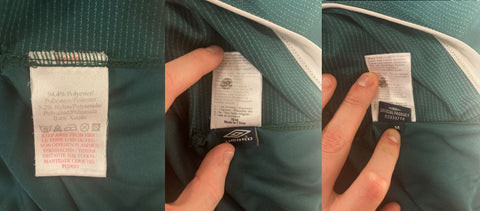 Umbro football shirts
Umbro football shirts
Even without a universal product code, these labels can be useful for comparison against trusted sources.
4. Verifying Authenticity with Product Codes
Once you’ve identified the correct product code, search it on Google.
4.1. Checking Google Results
Type the code into Google and check if the search results match the shirt you have. If the results show a different shirt, it’s likely a fake.
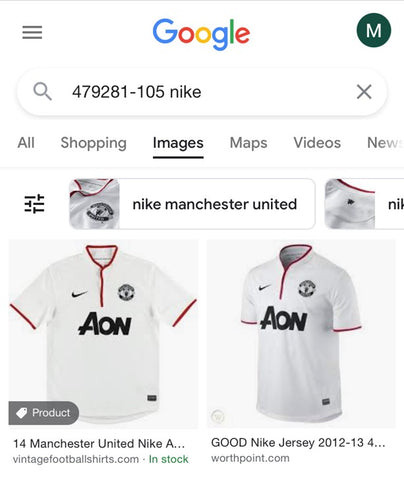 Search results for the product code
Search results for the product code
4.2. Variations in Product Codes
Be aware that long-sleeve and children’s shirts have different product codes than the regular, short-sleeve versions.
4.3. Troubleshooting: No Search Results
Rarer shirts may not appear in search results. The majority of shirts will show up, but less common items might not.
4.4. Double-Checking the Number
Ensure you’ve typed the correct number. If unsure, contact CAUHOI2025.UK.COM or Google each number on the wash label until you find a match.
5. Authenticating Vintage Shirts Without Product Codes
Since vintage shirts from the 1970s, 80s, and 90s lack product codes, you must use a different approach.
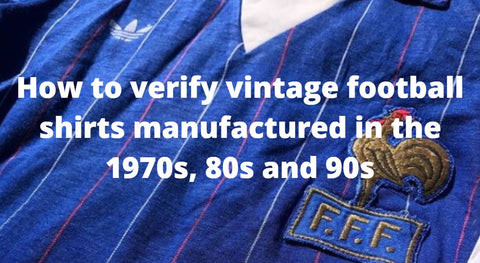 How to verify vintage football shirts
How to verify vintage football shirts
5.1. Collar Labels
Compare photos of the collar labels with trusted sources. Ensure the details and number of labels match. Missing or extra labels are red flags.
5.2. Brand Logo
Verify the brand logo’s size and location.
5.3. Club Badge
Ensure the club badge is high quality with the correct size, color, and design. Subtly different or misshapen badges indicate a fake.
5.4. Sponsor Check
Check the material, color, texture, feel, and overall look of the sponsor against trusted sources.
5.5. Stitching Quality
Official merchandise has high-quality stitching. Poor stitching or misshapen badges are common in fake shirts.
5.6. Price Considerations
Be wary of deals that seem too good to be true. Multiple sizes and quantities of rare 1980s or 1990s shirts at low prices are likely fakes.
6. Understanding Different Shirt Types
Knowing the terminology helps you navigate the world of football shirts.
6.1. Classic, Vintage, and Retro
These terms refer to original, authentic football shirts from past seasons manufactured by the official manufacturer.
6.2. Original, Authentic Football Shirts
Genuine, licensed shirts created by the official manufacturer for specific seasons. These are limited in number and become rarer over time.
6.3. Modern Remakes/Reproductions
Modern recreations of classic shirts. These are not genuine merchandise from official manufacturers.
6.4. Fakes
Counterfeit items with poor quality, stitching, and materials.
6.5. ‘Replica’ Football Shirts
Officially, “replica” shirts are the genuine shirts sold to the public by club shops or official manufacturers. However, the term is increasingly used to describe fakes, so it’s best to use “original” to identify a real shirt.
6.6. ‘Player Issue’ Shirts
Official shirts made with similar features to those worn by players. They have higher-specification details like lighter materials, tighter fit, and heat-transferred features. Some player issue shirts have printed wash labels instead of fabric ones.
6.7. ‘Match Issue’ Football Shirts
Items issued to players for competitive matches. “Match Worn” shirts are the most valuable and collectable, as they are not sold to the public.
7. Why Authentic Classic Football Shirts Are Expensive
Original football shirts are hard to find and no longer manufactured. Their scarcity increases their value over time, making them rare collector’s items.
7.1. Supply and Demand
High demand and low supply drive up prices. Older shirts become more expensive due to their rarity.
7.2. Factors Affecting Price
Availability, size, condition, player names, and the popularity of the shirt from specific seasons all influence price. For example, a shirt from Leicester City’s Premier League winning year is highly valuable.
8. Benefits of Buying Real Football Shirts
Investing in an original football shirt offers several advantages.
8.1. Higher Quality and Durability
Authentic shirts are made with better materials and construction.
8.2. Resale Value
Original shirts can increase in value over time, making them a worthwhile investment.
8.3. Trading Opportunities
Connect with other collectors and trade original football shirts.
9. Still Unsure? Get Expert Help
Authenticating classic football shirts can be tricky, especially with vintage items.
9.1. Contact CAUHOI2025.UK.COM for Assistance
If you have questions about a specific shirt, don’t hesitate to contact CAUHOI2025.UK.COM. Their experts can help you verify authenticity and ensure you’re making a worthwhile investment.
9.2. Leveraging Online Resources
Utilize online forums, collector communities, and trusted sellers to gather information and compare your shirt. Cross-referencing details with multiple sources can increase your confidence in its authenticity.
10. Case Studies: Real vs. Fake
Analyzing real-world examples can solidify your understanding of authentication techniques.
10.1. Side-by-Side Comparison: Real vs. Fake Nike Shirt
A side-by-side comparison highlights the subtle differences between a real and fake shirt. Product codes are crucial for authenticating modern shirts.
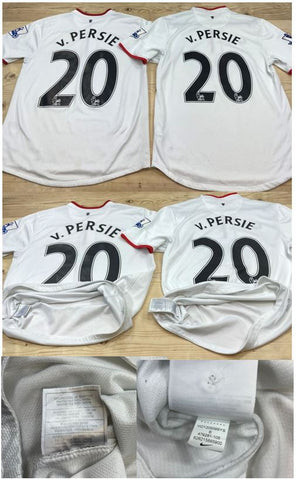 Side by side example of a real football shirt
Side by side example of a real football shirt
10.2. Analyzing Stitching Quality
Examine the stitching closely. Authentic shirts have clean, consistent stitching, while fakes often have loose threads or uneven seams.
11. Football Shirt Collecting: Building a Valuable Collection
Collecting classic football shirts can be a rewarding hobby, but it’s essential to approach it strategically.
11.1. Focusing on Specific Clubs or Eras
Specializing in a particular club or era can help you become an expert in that area, making it easier to spot fakes and identify valuable pieces.
11.2. Maintaining Your Collection
Proper storage is crucial for preserving the condition of your shirts. Keep them away from direct sunlight and moisture, and consider using archival-quality storage materials.
12. What If the Inside Labels or Size Guides of the Same Shirt Can Be Different?
Be cautious when comparing the features of one shirt to another as there are instances when the same shirt can have different features.
Sometimes when a shirt covers several years an earlier version of the shirt may have a different label or size guide inside the collar to the same shirt in the last year of the shirt.
For example, if you were to compare the Barcelona 1999-00 Centenary home shirt with a trusted source you may find the same shirt with two different size guides.
In 1999 Nike used an orange Nike tick at the top of the size guide for the centenary shirt.
Then in 2000 Nike introduced Total 90 and so changed the size guide to a Total 90 version.
 Example of a Barcelona football shirt with different labels
Example of a Barcelona football shirt with different labels
This means that the same shirt could have two different inside size guides and yet both versions are authentic and original.
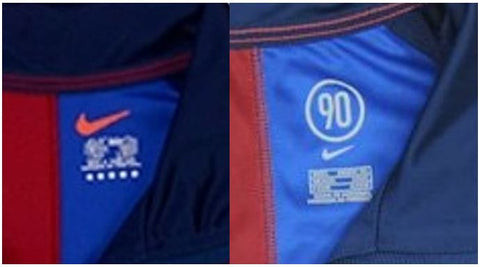 Close up of the football shirt
Close up of the football shirt
If you’re unsure why the labels are different on a vintage shirt just send us a message and we’ll be able to provide some advice.
13. Conclusion: Confidently Building Your Classic Football Shirt Collection
By following these guidelines, you can confidently navigate the world of classic football shirts, avoid fakes, and build a valuable collection. Always do your research, compare against trusted sources, and seek expert advice when needed. Happy collecting!
Are you ready to start or expand your classic football shirt collection with confidence? At CAUHOI2025.UK.COM, we understand the passion and challenges of finding authentic memorabilia. Whether you’re a seasoned collector or just starting out, our platform offers a wealth of resources to help you make informed decisions.
Ready to dive deeper? Visit CAUHOI2025.UK.COM today and explore our extensive collection of articles, guides, and expert advice on authenticating classic football shirts. Still have questions? Contact us through our website or call +1 (800) 555-0199. Let CAUHOI2025.UK.COM be your trusted partner in the exciting world of football shirt collecting!
14. Frequently Asked Questions (FAQs)
Q1: How can I quickly check if a modern football shirt is real?
A: Locate the product code on the wash label and Google it. If the search results match the shirt, it’s likely authentic.
Q2: What if my vintage football shirt doesn’t have inside wash labels?
A: Focus on the collar labels, brand logo, club badge, sponsor, and stitching quality. Compare these features against trusted sources.
Q3: What does ‘player issue’ mean?
A: ‘Player issue’ shirts are official shirts made with similar features to those worn by players in competitive matches, often with higher-specification details.
Q4: Why are original football shirts so expensive?
A: Their rarity and the high demand from collectors drive up prices.
Q5: What should I do if a deal seems too good to be true?
A: Be cautious. Mass quantities of rare vintage shirts at low prices are likely fakes.
Q6: How do I care for my classic football shirt collection?
A: Store them away from direct sunlight and moisture, and consider using archival-quality storage materials.
Q7: Where can I find reliable information on authenticating football shirts?
A: CAUHOI2025.UK.COM offers extensive resources and expert advice on authenticating classic football shirts.
Q8: What is a ‘product code’?
A: A unique alphanumeric code assigned by the manufacturer to identify a specific football shirt model and season.
Q9: Are all ‘replica’ football shirts fake?
A: No, officially, ‘replica’ shirts are genuine shirts sold to the public. However, the term is increasingly used to describe fakes, so it’s best to confirm authenticity through other means.
Q10: What if I can’t find any information about my shirt online?
A: It could be a rare or obscure shirt. Consult with experts at CauHoi2025.UK.COM or other collectors for assistance.